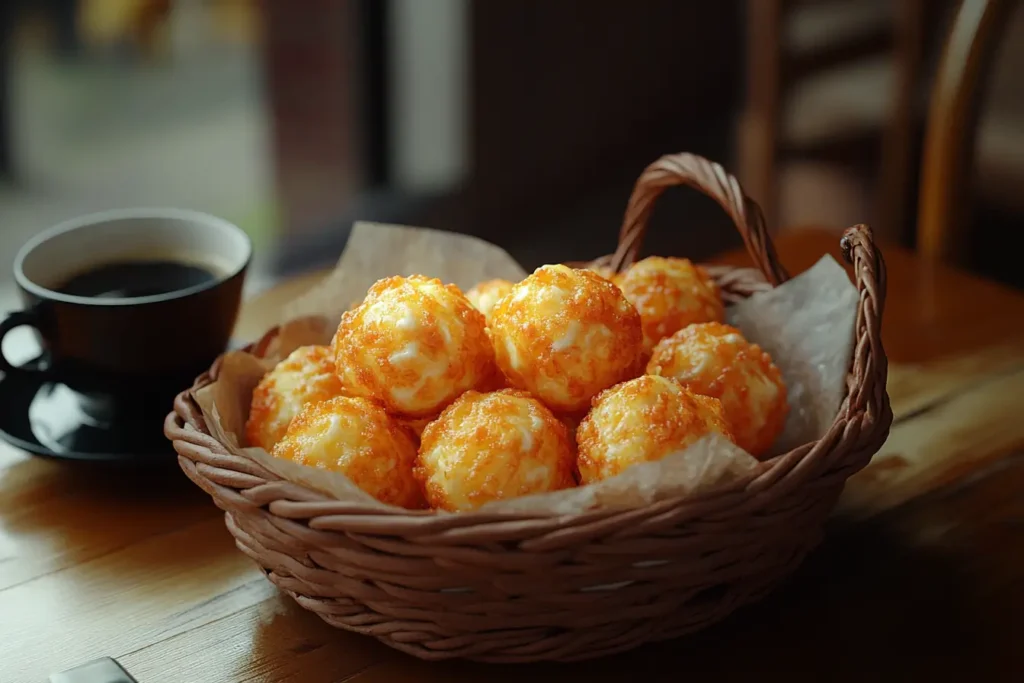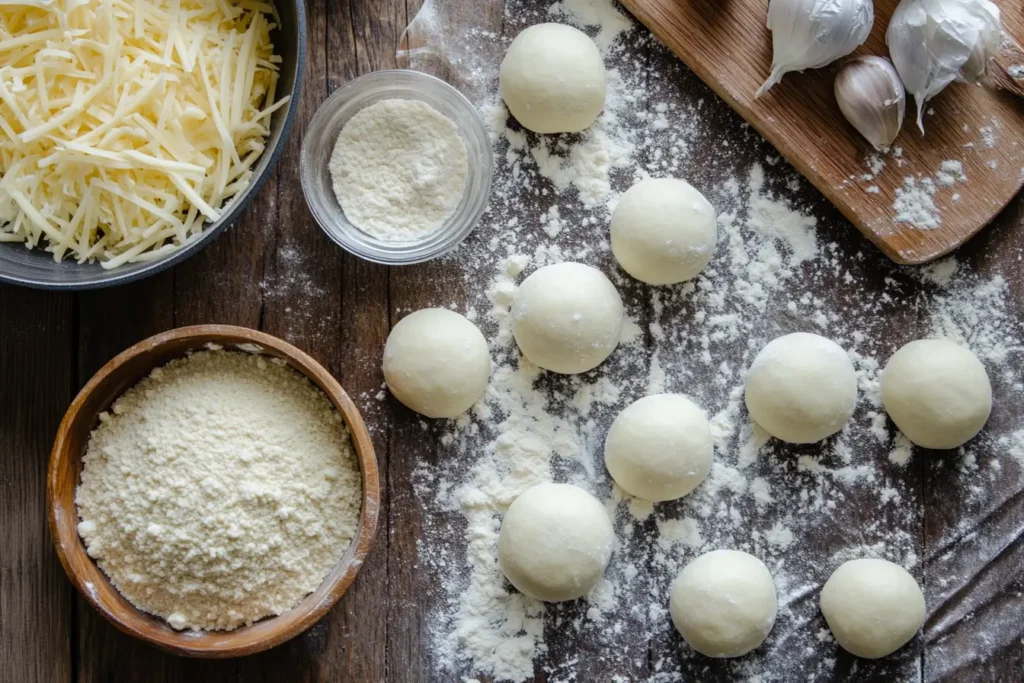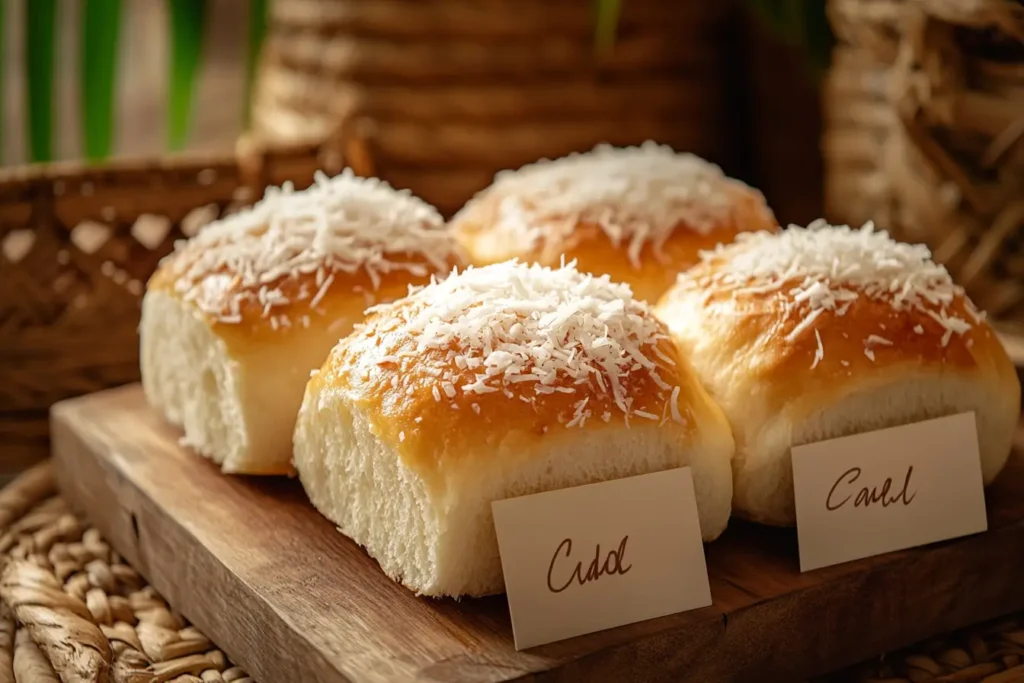
If you’ve ever explored Colombian cuisine, you’ve probably come across Pandebono, a beloved savory cheese bread enjoyed by both locals and visitors. More than just a snack, Pandebono is a symbol of Colombia’s rich culinary tradition. Its delightful combination of flavors and textures has made it a staple in homes, bakeries, and cafés across the country.
In this article, we’ll uncover the history, key ingredients, preparation process, and cultural importance of Pandebono. Whether you’re an experienced baker or simply curious about Colombian treats, you’ll gain a deeper appreciation for this iconic bread—and perhaps even be inspired to bake it yourself!
What is Pandebono?
Definition of Pandebono
Pandebono is a traditional Colombian bread made with yuca flour (cassava starch), cheese, eggs, and sometimes cornmeal. It’s characterized by its round shape, slightly golden crust, and soft, chewy interior. The name “Pandebono” loosely translates to “good bread,” a nod to its delicious taste and popularity among Colombians.
Origins of the Name
There are several theories about how Pandebono got its name. Some say it derives from “pan del bono,” referencing a bread recipe that originated with Italian immigrants in Colombia. Another theory suggests it stems from the phrase “pan de bueno,” meaning “good bread” in Spanish. Regardless of its origin, the name perfectly encapsulates the joy of eating this irresistible treat.
How it Differs from Similar Breads
While Pandebono shares similarities with other Latin American breads like Pão de Queijo from Brazil, it has distinct differences. The use of yuca flour, combined with Colombian cheese, gives it a unique texture and flavor profile that sets it apart. Pandebono is less elastic and has a slightly crispier exterior than its Brazilian counterpart.
The History of Pandebono
Historical Roots in Colombia
Pandebono’s origins can be traced back to the Valle del Cauca region, where it became a staple food for local farmers. Its simple ingredients were readily available, making it an affordable and practical choice for rural communities. Over time, Pandebono evolved from a humble snack to a national favorite.
Regional Variations
While the classic recipe is widely recognized, there are regional twists on Pandebono that reflect the diverse culinary traditions of Colombia. For instance, in some areas, bakers add a hint of sugar for a sweeter version, while others incorporate anise seeds for a subtle licorice flavor. Each variation offers a new perspective on this beloved bread.
Significance in Traditional Celebrations
Pandebono is more than just a daily snack; it’s also a key part of Colombian festivities. During holidays and family gatherings, it’s common to see baskets of Pandebono served alongside steaming cups of hot chocolate or aguapanela (a traditional sugarcane drink).
Ingredients of Pandebono
Key Ingredients
The magic of Pandebono lies in its simplicity, with just a handful of ingredients working together to create its signature flavor and texture:
- Yuca Flour (Cassava Starch): This gluten-free flour is the backbone of Pandebono, providing its light, airy texture.
- Cheese: Fresh Colombian cheese, such as queso costeño or queso fresco, adds a tangy, salty kick.
- Cornmeal: Optional but commonly used, cornmeal enhances the flavor and gives a slight crunch to the bread.
- Eggs: Essential for binding the ingredients and creating a soft, pliable dough.
- Milk: Occasionally added to achieve the perfect consistency in the dough.
Quality of Ingredients
The key to a great Pandebono is using fresh, high-quality ingredients. Authentic Colombian cheese and yuca flour are particularly important for achieving the traditional taste. Substituting these with inferior products can significantly alter the flavor and texture.
The Unique Preparation Process
Making Pandebono at home is a rewarding experience that allows you to enjoy the authentic flavors of Colombia. The process is simple, yet it requires attention to detail to achieve the perfect texture and taste.
Step-by-Step Preparation
- Gather Ingredients:
Ensure you have yuca flour, fresh cheese, cornmeal (if using), eggs, and milk. Measure your ingredients accurately for consistency. - Prepare the Dough:
- Grate the cheese finely, as this helps it blend evenly into the dough.
- In a large mixing bowl, combine yuca flour, grated cheese, and cornmeal. Mix thoroughly.
- Add the eggs and a small amount of milk, mixing until the dough reaches a pliable, slightly sticky consistency.
- Shape the Dough:
- Divide the dough into equal portions, rolling each into a ball about the size of a golf ball.
- Flatten slightly if you prefer a more disc-like shape.
- Bake:
- Preheat your oven to 375°F (190°C). Place the dough balls on a parchment-lined baking sheet, leaving some space between them.
- Bake for 15-20 minutes or until the tops turn golden brown and the aroma fills your kitchen.
- Cool and Serve:
Let the Pandebono cool for a few minutes before serving. They are best enjoyed warm when their soft interior contrasts beautifully with the slightly crisp crust.

Techniques for Perfect Texture
- Kneading: Avoid over-kneading the dough, as this can make the Pandebono dense and chewy.
- Moisture Balance: If the dough feels too dry, add a splash of milk. If it’s too sticky, sprinkle in more yuca flour.
- Baking Time: Keep a close eye on the oven to prevent overbaking, which can lead to a tough crust.
Common Mistakes to Avoid
- Using pre-shredded cheese: Freshly grated cheese melts and blends better.
- Skipping preheating: Always preheat your oven for even baking.
- Overloading the baking sheet: Leave enough space for the Pandebono to expand slightly as they bake.
Regional Variations
Pandebono from Valle del Cauca
The Valle del Cauca region, considered the birthplace of Pandebono, offers the most traditional version of this bread. It’s typically made without any sweeteners and has a straightforward, savory profile.
Coastal Influences
In Colombia’s coastal regions, Pandebono is sometimes made with a touch of coconut milk, giving it a subtle tropical flavor. This variation pairs beautifully with freshly brewed coffee or fruit juices.
Modern Interpretations of the Recipe
In urban areas, bakers and home cooks have started experimenting with flavors, adding ingredients like jalapeños for a spicy kick or chocolate chips for a sweet twist. These innovations showcase how Pandebono continues to evolve while retaining its cultural roots.
Why is Pandebono Popular?
Its Versatility as a Snack
Pandebono can be enjoyed at any time of the day. It’s perfect for breakfast alongside a steaming cup of coffee, as a mid-afternoon snack, or even as an accompaniment to soups and stews.
Flavor Profile
The combination of tangy cheese, the nutty notes of yuca flour, and the subtle richness of eggs makes Pandebono uniquely delicious. Its balance of savory and slightly sweet flavors appeals to a wide range of palates.
Nutritional Aspects
Pandebono is naturally gluten-free, thanks to the use of yuca flour, making it a great option for those with dietary restrictions. Additionally, its protein content, derived from eggs and cheese, provides a satisfying and energizing snack.
Pandebono and Its Role in Colombian Cuisine
Served with Coffee or Hot Chocolate
In Colombia, Pandebono is often paired with tinto (a small, strong black coffee) or hot chocolate. The warm, cheesy bread perfectly complements the bold flavors of these beverages.
Inclusion in Breakfasts and Snacks
Pandebono is a staple in Colombian breakfasts, often served alongside arepitas and empanadas. Its portability and easy preparation also make it a popular choice for on-the-go snacks.
Modern Twists on Pandebono
While the traditional recipe for Pandebono remains a timeless classic, modern adaptations have introduced exciting variations that cater to diverse tastes and dietary preferences. These twists preserve the essence of Pandebono while offering something new and intriguing.
Flavored Variations
- Savory Additions:
- Jalapeño Pandebono: A spicy twist with diced jalapeños folded into the dough, adding a hint of heat that pairs perfectly with the cheese.
- Herb-Infused Pandebono: Fresh herbs like rosemary, thyme, or parsley provide a fragrant and earthy touch.
- Sweet Versions:
- Chocolate Pandebono: Incorporating chocolate chips or cocoa powder adds a delightful sweetness, making it a great dessert option.
- Coconut Pandebono: A touch of shredded coconut and a dash of sugar create a tropical variation that’s perfect with coffee or tea.

Gluten-Free Adaptations
The original Pandebono is naturally gluten-free due to the use of yuca flour. However, some variations cater specifically to modern health trends by avoiding additional ingredients like cornmeal, ensuring the bread remains suitable for those with gluten sensitivities.
Vegan Versions
Replacing eggs and cheese in a recipe like Pandebono might seem challenging, but creative adaptations make it possible:
- Egg Substitutes: Flaxseed meal or chia seeds mixed with water can mimic the binding properties of eggs.
- Cheese Alternatives: Plant-based cheeses, especially those made from cashews or almonds, can replace traditional cheese while maintaining the bread’s creamy texture and savory flavor.
Pairing Suggestions
Pandebono is a versatile treat that pairs well with various beverages and dishes, making it a staple in Colombian cuisine and beyond.
Best Beverages to Pair with Pandebono
- Coffee:
Whether it’s a bold espresso, a milky latte, or a classic Colombian tinto, coffee enhances the savory richness of Pandebono. - Hot Chocolate:
A cup of thick, frothy Colombian hot chocolate is a traditional companion, creating a comforting blend of flavors. - Tea:
Herbal teas like chamomile or mint provide a light and refreshing contrast to the richness of the bread. - Juices:
Fresh tropical juices such as maracuyá (passion fruit) or lulo complement Pandebono’s tangy notes.
Complementary Dishes
- Soups: Serve Pandebono alongside Colombian soups like ajiaco or sancocho for a hearty and satisfying meal.
- Salads: Its cheesy, savory flavor pairs well with fresh green salads, especially those with citrus-based dressings.
The Cultural Impact of Pandebono
Pandebono is more than just a snack; it’s a symbol of Colombian identity and pride. Its widespread popularity both within and outside Colombia reflects its deep cultural significance.
A Symbol of Colombian Identity
For many Colombians, Pandebono represents the comfort of home. Its distinctive aroma and taste evoke memories of family gatherings, celebrations, and everyday moments shared over a warm cup of coffee.
Exported Around the World
Thanks to the global Colombian diaspora, Pandebono has found its way into bakeries and homes worldwide. International supermarkets and online stores now offer pre-made mixes and frozen versions, making it accessible to fans everywhere.
Festivals and Traditions
In some regions of Colombia, Pandebono takes center stage during food festivals and local events. Bakers often compete to create the most authentic or creative versions, celebrating the bread’s versatility and cultural significance.
How to Make Pandebono at Home
If you’re ready to experience the magic of Pandebono, making it at home is easier than you might think. With a few basic ingredients and simple steps, you can enjoy freshly baked Pandebono that rivals any Colombian bakery.
Easy Recipe Guide
Ingredients:
- 1 cup of yuca flour (cassava starch)
- 1 cup of grated fresh cheese (queso fresco or mozzarella as an alternative)
- 1/4 cup of cornmeal (optional)
- 1 large egg
- 2-3 tablespoons of milk
Instructions:
- Preheat your oven to 375°F (190°C).
- In a large mixing bowl, combine the yuca flour, grated cheese, and cornmeal (if using).
- Beat the egg and add it to the dry ingredients. Mix thoroughly.
- Slowly add milk, one tablespoon at a time, until the dough becomes soft and pliable.
- Roll the dough into small balls and place them on a parchment-lined baking sheet.
- Bake for 15-20 minutes, or until the tops are golden brown.
- Let cool slightly before serving. Enjoy warm for the best experience!
Tips for Beginners
- Use fresh cheese for a richer flavor.
- If the dough is too sticky, sprinkle in a little extra yuca flour.
- Don’t overcrowd the baking sheet to ensure even cooking.
Storage Suggestions
Pandebono is best enjoyed fresh but can be stored in an airtight container for up to two days. To reheat, simply pop them in the oven at a low temperature for a few minutes.
Frequently Asked Questions
What does Pandebono taste like?
Pandebono has a unique flavor profile that combines the tangy saltiness of cheese with the nutty, slightly earthy taste of yuca flour. Its texture is soft and chewy on the inside, with a golden, lightly crisp crust. The bread’s rich and savory taste makes it a satisfying treat any time of day. For insights on other baked goods with contrasting textures, explore our guide to breakfast pastries.
Can you freeze Pandebono?
Yes, Pandebono freezes well! To freeze, shape the dough into balls and place them on a baking sheet lined with parchment paper. Once frozen solid, transfer them to an airtight container or freezer bag. When ready to bake, preheat your oven and bake the frozen dough balls without thawing. They may need an extra 5 minutes in the oven. Interested in freezing other meals? Learn about freezing tips for homemade dishes.
Is Pandebono gluten-free?
Absolutely! The use of yuca flour (cassava starch) in place of wheat flour makes Pandebono naturally gluten-free. It’s an excellent option for people with gluten sensitivities or those following a gluten-free diet. Want more ideas for gluten-free recipes? Discover how cassava starch transforms cooking.
What type of cheese is best for Pandebono?
Traditional Pandebono is made with queso costeño, a salty, crumbly cheese common in Colombia. If you can’t find queso costeño, substitutes like queso fresco, feta, or mozzarella are good alternatives. For an extra punch of flavor, you can also experiment with a mix of cheeses. Wondering how to pair cheeses in other recipes? Check out our cheese pairing tips.
How long does Pandebono stay fresh?
Pandebono is best eaten fresh out of the oven. However, it can stay fresh for about 1-2 days when stored in an airtight container at room temperature. For longer storage, freezing is recommended. Want to learn more about keeping dishes fresh? Read about storage tips for other recipes.
Can I make Pandebono without eggs?
Yes, you can make egg-free Pandebono by using flaxseed meal or chia seeds as a replacement. Mix one tablespoon of ground flaxseed or chia seeds with three tablespoons of water and let it sit for a few minutes to form a gel-like consistency. Use this mixture as a substitute for one egg. Looking for more egg substitution ideas? Check out our guide to alternative ingredients.
Conclusion
Pandebono is more than just a delightful cheese bread; it’s a cultural treasure that carries the heart and soul of Colombian cuisine. From its humble beginnings in the Valle del Cauca region to its modern adaptations and worldwide popularity, Pandebono continues to bring people together with its irresistible flavor and comforting texture.
Whether you enjoy it with a cup of Colombian coffee, pair it with hearty soups, or try one of the modern twists, Pandebono offers a taste of Colombia in every bite. So, why not roll up your sleeves and bake a batch at home? With its simple ingredients and straightforward preparation, this beloved bread is sure to become a favorite in your household too.
